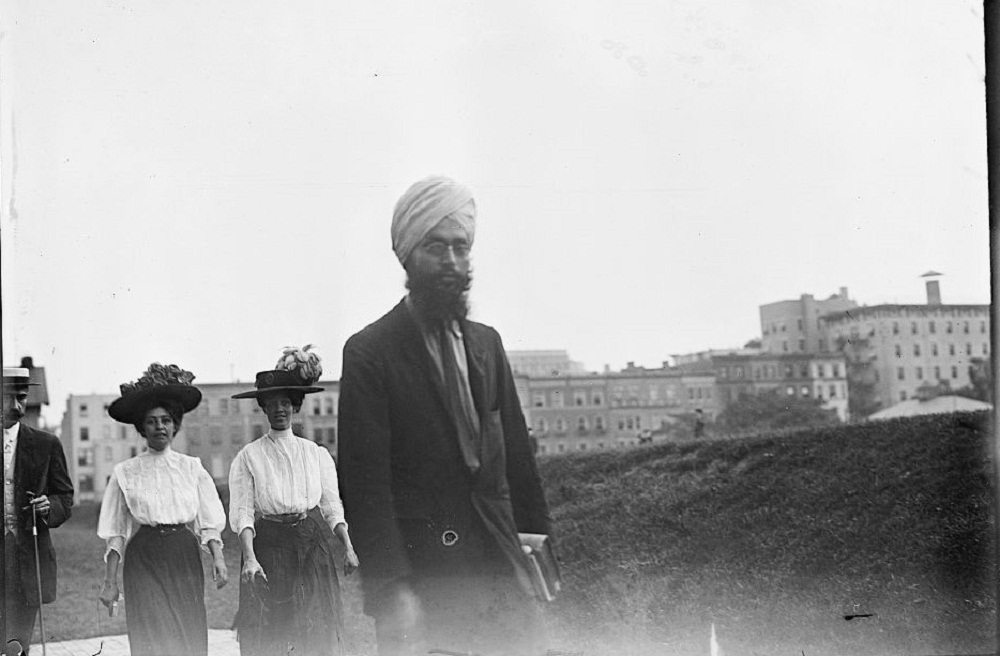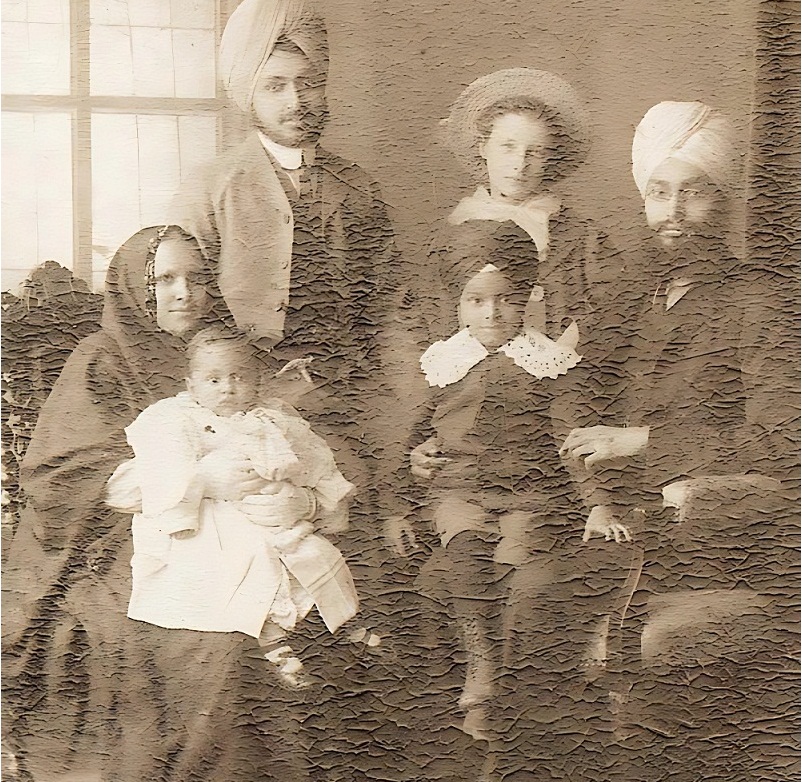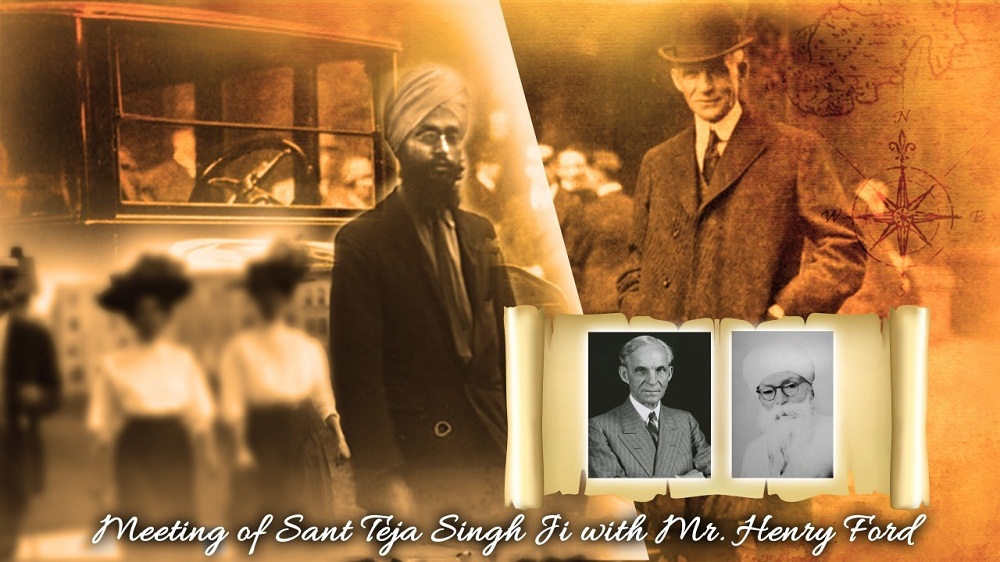A humble tribute to the life & legacy of Sant Teja Singh Ji Maharaj.
-
Date & Time:
- July-05, 2025
We offer a humble tribute to the life & legacy of Sant Teja Singh Ji
Maharaj.
On 5th July, we celebrate the legacy of Sant Teja Singh Ji Maharaj, marking Sant Ji's
60th Barsi at Gurdwara Sri Bangla Sahib, New Delhi — reflected through the following
milestones of his remarkable journey.
1. The First ambassador of Sikhi to the Western world.
Sant Teja Singh Ji Mastuanewale was one of the shining spiritual luminaries of the 20th
century — a saint, scholar, and the first ambassador of Sikhi to the Western world. A
graduate of Government College Lahore, Punjab University and Harvard University, he stood
as a rare blend of intellectual brilliance and spiritual radiance, a guiding light in an
increasingly materialistic world.
But long before he became a saint, his journey was marked by internal struggles and
transformation.
2. Sant Ji’s First Lesson
As a young man named Niranjan Singh Mehta, he was deeply influenced by Western
thought, non-religious, a rationalist and a sharp critic of traditional practices. Though honest,
kind and socially aware, Sant Ji once considered bowing to Guru Granth Sahib Ji akin to idol
worship.
However, a pivotal moment came while serving as a senior teacher at a leading Sikh
institution. In order to avoid bowing in the Gurdwara, Sant Ji began arriving before others,
until one day, a profound spiritual experience overtook him. Alone in the Darbar Sahib, he
suddenly felt the divine presence of the Guru Sahib. Drawn by an unseen force, he bowed
deeply before Guru Granth Sahib Ji and began uttering the names of the Guru Sahib
involuntarily, with tears in his eyes.
Unable to explain the transformation he had experienced in the Gurdwara Sahib, he sought
spiritual guidance and was eventually directed to Sant Attar Singh Ji Maharaj, under
whose influence he underwent a complete inner reformation.
His first lesson was to shed all ill-will, including toward Sant Ji’s stepmother, who had
treated him harshly. Despite the mistreatment, he had always responded with deep tolerance.
This immense forbearance, which later became a cornerstone of his character, was something
he attributed to his mother, to whom he would later dedicated his autobiography.
It reflects a timeless truth: Mothers have the power to shape the destiny of their children.
Her quiet lessons in patience and humility laid the foundation for his towering spiritual
presence.
With a clean heart and a renewed soul, he returned to his duties. In 1905, he and his family
formally took Amrit, and his name was changed to Teja Singh.This story is a profound
reminder that even the most intellectual and sceptical minds can be humbled, awakened and
transformed when touched by true spiritual grace.
The Unseen Influence: How Sant Teja Singh Ji Awakened Henry Ford and
Sparked Global Social Change
3. The Meeting - A Ten-Minute Journey That Stirred a Soul
Among the many extraordinary episodes in Sant Ji’s life was his brief but powerful encounter
with Henry Ford around 1913, a meeting that revealed how the quiet force of a saint can
awaken the conscience of even the most powerful.
Sant Teja Singh Ji felt a spiritual urge to meet Ford. Despite Ford’s packed schedule, Sant Ji
was granted a few minutes, not in an office, but during a car ride.
He asked Ford four simple but piercing questions:
1. "How much do you earn a day?"
2. "How much money do you have in the banks?"
3. "How much more do you want?"
4. "Are you at peace?"
Ford answered the first three but fell silent at the fourth. “No,” he admitted, “I am not at
peace.”
“How do I find peace?” he asked.
Sant Ji handed him a mala (prayer beads) and advised him to remember the name of Jesus
and meditate. He reminded Ford that wealth without purpose is a burden and true peace is
found through self-purification and service to the poor. Ford was deeply moved.
🔹 Henry Ford Before 1913
Up to that point, Ford was focused on innovation and industrial growth. Working conditions
were harsh, and there was little focus on human welfare or philanthropy.
🔸 A Turning Point: Transformation After 1913
Whether one calls it coincidence or consequence — after this meeting, Ford’s approach
shifted dramatically, planting a seed that grew into a global movement for social change:
1914: Introduced the revolutionary $5-a-day wage, doubling worker pay.
1914: Launched worker welfare programs including healthcare and education.
1914: Took a stand against child labour.
1915: Established Henry Ford Hospital with his wife.
1915: Funded the Peace Ship initiative to negotiate during WWI.
1926: Introduced the five-day, 40-hour workweek.
1930s: During the Depression, resisted mass layoffs and expanded worker aid.
1936: Founded the Ford Foundation, one of the largest philanthropic entities.
1940s: Though a pacifist, supported WWII production to help sustain employment.
1941: Signed the first union contract and promoted diverse hiring practices.
🔹 Spiritual Reflection
Sant Teja Singh Ji didn’t need long speeches, media campaigns, or positions of power. His
silent sincerity, anchored in deep spiritual strength, awakened the heart of a man whose
choices impacted millions.
He proved that true leadership is not in commanding others — but in elevating them. His
message, that peace lies in remembrance of the Divine and selfless service, continues to
resonate even a century later.


